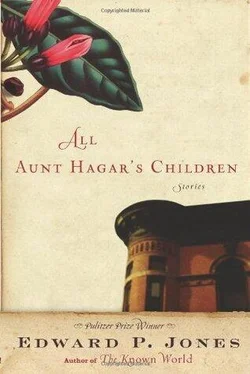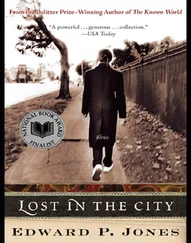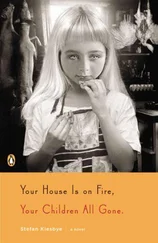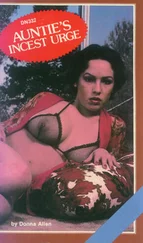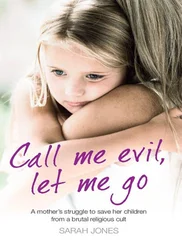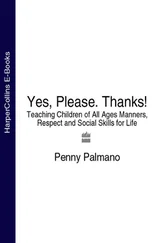“Just let me get to that bed,” Percival said, and Sara agreed with him that everything in the world got better after a little food and a long nap.
The sergeant’s wife, Anita Hughes Channing, had, even before her child’s illness, begun to think that the school her daughter attended was not the best place for her. She knew that most of the teachers and administrators at the New Day Arising Christian School had their hearts in the right place, but Anita, a lapsed Catholic, had concerns about her child’s new teacher, a forty-seven-year-old man with seven children, a good and passionate man who had found religion when he was forty years of age. Perhaps too much goodness and passion might be too much for nine-year-old Bethany. Anita had picked New Day Arising because it was only blocks down from her D.C. government job at a nearly forgotten outpost on Minnesota Avenue in Northeast and because she thought her daughter should have some religion in her life, since they did not regularly attend church. What religion Bethany did get before New Day Arising had come from Sunday mass at St. Augustine’s on 15th Street when she visited Anita’s parents who lived in an apartment a block from Scott Circle on 16th. At mass, safe between her grandmother and grandfather, the child all but ignored the priest, but concentrated, Sunday after Sunday, on the Stations of the Cross.
Through the second and third grades, Bethany’s teachers had been fine, exactly what her mother had wanted. The school had a reputation for, as its four-page brochure proclaimed, serving up education as the main course, with religion as the appetizer and the drink and the dessert. The latter three were there and they had importance, but they weren’t the entrée, they weren’t the whole of the school’s reason for being. Bethany’s fourth-grade teacher, Methuselah Harrington, accepted this when he was hired; he even signed a vague pledge to that effect minutes after he filled out tax forms in the school’s office two weeks before school started. But Methuselah, “a reformed and wanton scoundrel,” knew well what religion had done for him and for his own children, and he was determined that every black child he had any influence on would know that salvation as well. He was never to do anything so outrageous as to violate the pledge, to put religion at the center of the meal, but in the middle of a child answering an arithmetic question or as a child was reading something quite secular, he would ask the boy or girl, “Who will save you from the pains of perdition?” or “Who will favor you with everlasting life?”
The answer to those questions earned gold stars. Nothing was given for a correct arithmetic answer or for a splendid reading of a passage about some family’s summer trip to the sea with Grandmother and Grandfather. In early October, a week before Bethany became ill, Methuselah brought in a poster and taped it to the wall under the clock and opposite the windows. It was not a big poster, certainly smaller than the map of the United States to its left, and more or less the same size as the pictures to the right of Malcolm X and Sojourner Truth and Martin Luther King Jr. But the poster, an elongated thing that reminded Bethany and her friend Jessica of a scroll, held the children’s attention because at the top of it were the words “The Life of Methuselah.” The children had been told on the first day of school that they could call their teacher “Mr. Harrington” or “Mr. Methuselah”; being children, they chose something different from what the other kids did with their teachers, and Bethany and her classmates called him by his first name. And being children, they found it hard not to relate the man named Methuselah on the poster with the teacher Mr. Methuselah who led them in the Lord’s Prayer every morning and who told them how the people in Lapland lived day to day amid snow and reindeer and darkness a good part of the year.
The poster showed Methuselah—always in brown sandals and a brown biblical robe similar to what the kids always saw Jesus wearing—first as a crawling baby, then a boy, a teenager, a man, et cetera, until he was a ninety-year-old man, a rather spry-looking fellow still full of life with his legs apart and his hands at his hips as though ready for any demon the Devil would toss his way. But at ninety-one, Methuselah seemed to be faltering, head bent, arms sluggishly at his sides, his robe not as well cared for as in earlier pictures. Jesus stood behind him at ninety-one and was touching the top of the man’s head. From there on, at one hundred, at two hundred, and all the way to nine hundred, Methuselah was spry again. At nine hundred and one, he had wings and a halo, and aside from those things, he didn’t look any different than he had throughout the centuries. The children in Bethany’s class didn’t yet know a whole lot about the difference between the Old and New Testaments, and the teachers and administrators who went in and out of Methuselah’s class never paid the poster much attention. Only the janitor saw that Jesus Christ had wandered over from the New Testament into the Old, but New Day Arising didn’t pay her to tell anyone about an impossibility.
Bethany Channing woke a little after one in the afternoon, and her fever and sore throat were gone and she was very hungry. She called for her mother and then for her father, forgetting for the moment that the sergeant—according to how she measured on the globe next to Mr. Methuselah’s desk—was nearly two hands away from that little star that was Washington, D.C. She called for her mother again, and as the child edged toward the side of the bed, she looked down to see Anita covered with a blanket and asleep on the floor. Nothing in days and days had made her happier than to see Anita that way. She thought to lean down and kiss her mother but hunger pulled the child to the other side and Bethany got up and went to the kitchen to fix a breakfast of cold cereal and a croissant splattered with marmalade.
Anita found her child sitting at the table with the bowl at her mouth, drinking the last of the cereal’s milk. The mother herself had become ill at about eleven years old, bones aching, headaches that tossed her mind from one shore to another. She suffered along for years and years, better sometimes and other times too ill to even get out of her bed. No doctor knew what was wrong, and most of them told Anita’s parents that the best that could be done was to keep her comfortable. The parents, not knowing from where the harm came, forbade so many things, from stuffed animals to sweets to Anita’s friends with colds and small cuts on faces and hands. They sensed that what all the doctors were leaving off was that she should be comfortable because the end was not far away. Her mother stopped working in Anita’s eleventh year because, as she told her husband, if her child was to die, she did not want her to pass away alone. Anita’s mother had three years of college, and she taught her daughter what little she had learned during those times the girl was capable of learning. Her father took a second job in the evenings, and the family, which included a younger brother, stayed near the bottom of the middle class, a few paychecks from the lower class in which the parents had been raised and which they had thought they would not have to see again.
Anita waited until Bethany had downed the last of the milk and the girl, seeing her mother, did a little dance as she sat, her feet tapping the floor, her shoulders twisting from side to side as she moved her arms up and down. The mother’s childhood had more or less stopped with the illness no doctor could diagnose. Her friends came by off and on during the first year, but in time, as she failed to recover fully, most of them went back to their own childhoods and forgot the girl whose mother had made a permanent pallet beside her bed.
Читать дальше
